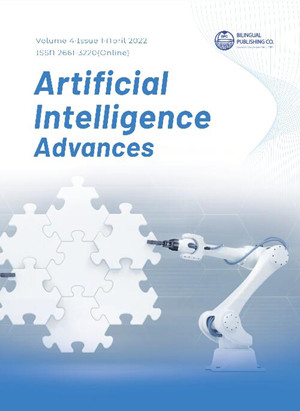-
187
-
171
-
166
-
155
-
150
Elderly Fall Detection by Sensitive Features Based on Image Processing and Machine Learning
DOI:
https://doi.org/10.30564/aia.v4i1.4419Abstract
The world’s elderly population is growing every year. It is easy to say that the fall is one of the major dangers that threaten them. This paper offers a Trained Model for fall detection to help the older people live comfortably and alone at home. The purpose of this paper is to investigate appropriate methods for diagnosing falls by analyzing the motion and shape characteristics of the human body. Several machine learning technologies have been proposed for automatic fall detection. The proposed research reported in this paper detects a moving object by using a background subtraction algorithm with a single camera. The next step is to extract the features that are very important and generally describe the human shape and show the difference between the human falls from the daily activities. These features are based on motion, changes in human shape, and oval diameters around the human and temporal head position. The features extracted from the human mask are eventually fed in to various machine learning classifiers for fall detection. Experimental results showed the efficiency and reliability of the proposed method with a fall detection rate of 81% that have been tested with UR Fall Detection dataset.
Keywords:
Human fall detection; Machine learning; Computer vision; ElderlyReferences
[1] Wu, G., 2000. Distinguishing fall activities from normal activities by velocity characteristics. Journal of Biomechanics. 33(11), 1497-1500. DOI: https://doi.org/10.1016/s0021-9290(00)00117-2
[2] Nash, A., 2019. National population projections: 2018-based. Office for National Statistics. https://www.ons.gov.uk/peoplepopulationandcommunity/ populationandmigration/populationprojections
[3] McNicoll, G., 2002. World Population Ageing 1950- 2050. Population and development Review, 28(4), 814-816. https://www.un.org/en/development/desa/ population/publications/pdf/ageing/WorldPopulationAgeing2019-Highlights.pdf
[4] Leone, A., Diraco, G., Distante, C., et al., 2008. multi-sensor approach for people fall detection in home environment. Workshop on Multi-camera and Multi-modal Sensor Fusion Algorithms and Applications-M2SFA2. https://hal.inria.fr/inria-00326739
[5] Diraco, G., Leone, A., Siciliano, P., 2010. An active vision system for fall detection and posture recognition in elderly healthcare. 2010 Design, Automation & Test in Europe Conference & Exhibition(DATE 2010). pp. 1536-1541. DOI: https://doi.org/10.1109/DATE.2010.5457055
[6] Perner, P., Imiya, A., 2011. Machine learning and data mining in pattern recognition. Springer-Verlag Berlin Heidelberg. pp. 1-264. https://link.springer. com/book/10.1007/978-3-642-23199-5
[7] Chen, Y.T., Lin, Y.Ch., Fang, W.H., 2010. A hybrid human fall detection scheme. 2010 IEEE International Conference on Image Processing. pp. 3485-3488. DOI: https://doi.org/10.1109/ICIP.2010.5650127
[8] Xiang, Y.J., Arora, J.S., Abdel-Malek, K., 2010. Physics-based modeling and simulation of human walking: a review of optimization-based and other approaches. Structural and Multidisciplinary Optimization. 42(1), 1-23. DOI: http://dx.doi.org/10.1007/s00158-010-0496-8
[9] Gjoreski, H., Lustrek, M., Gams, M. 2011. Accelerometer placement for posture recognition and fall detection. Seventh International Conference on Intelligent Environments. pp. 47-54. DOI: https://doi.org/10.1109/IE.2011.11
[10] Bergen, G., Stevens, M. R., Burns, E. R. 2016. Falls and fall injuries among adults aged 65 years United States. MMWR Morbidity and mortality weekly report. 65(37), 993-998. DOI: https://doi.org/10.15585/mmwr.mm6537a2
[11] Ma, X., Wang, H.B., Xue, B.X., et al., 2014. Depthbased human fall detection via shape features and improved extreme learning machine. IEEE journal of biomedical and health informatics. 18(6), 1915-1922. DOI: https://doi.org/10.1109/JBHI.2014.2304357
[12] Jansen, B., Deklerck, R., 2006. Context aware inactivity recognition for visual fall detection. Pervasive Health Conference and Workshops. pp. 1-4. DOI: https://doi.org/10.1109/PCTHEALTH.2006.361657
[13] Nait-Charif, H., McKenna, S.J., 2004. Activity summarisation and fall detection in a supportive home environment. Proceedings of the 17th International Conference on Pattern Recognition. 4(1), 323-326. DOI: https://doi.org/10.1109/ICPR.2004.1333768
[14] Dai, J.P., Bai, X.L., Yang, Zh.M., et al., 2010. Mobile phone-based pervasive fall detection. Personal and Ubiquitous Computing. 14(7), 633-643. DOI: http://dx.doi.org/10.1007/s00779-010-0292-x
[15] Dubitzky, W., Granzow, M., Berrar, D., 2007. Fundamentals of data mining in genomics and proteomics. Springer Science & Business Media. https://link.springer.com/book/10.1007/978-0-387-47509-7
[16] Hazelhoff, L., Han, J.G., 2008. Video-based fall detection in the home using principal component analysis. International Conference on Advanced Concepts for Intelligent Vision Systems. pp. 298-309. DOI: http://dx.doi.org/10.1007/978-3-540-88458-3_27
[17] Leclercq, S., 2000. In-company same-and low-level falls: From an understanding of such accidents to their prevention. International journal of industrial ergonomics. 25(1), 59-67. DOI: https://doi.org/10.1016/S0169-8141(98)00095-X
[18] Xiang, Y.J., Arora, J.S., Abdel-Malek, K., 2010. Physics-based modeling and simulation of human walking: a review of optimization-based and other approaches. Structural and Multidisciplinary Optimization. 42(1), 1-23. DOI: https://doi.org/10.1007/s00158-010-0496-8
[19] Pai, Y.Ch., Patton, J., 1997. Center of mass velocityposition predictions for balance control. Journal of Biomechanics. 30(4), 347-354. DOI: https://doi.org/10.1016/S0021-9290(96)00165-0
[20] Popescu, M., Li, Y., Skubic, M., et al., 2008. An acoustic fall detector system that uses sound height information to reduce the false alarm rate. 30th Annual International Conference of the IEEE Engineering in Medicine and Biology Society. 4628- 4631. DOI: https://doi.org/10.1109/IEMBS.2008.4650244
[21] Hartikainen, S., Lönnroos, E., Louhivuori, K., 2007. Medication as a risk factor for falls: critical systematic review. The Journals of Gerontology Series A: Biological Sciences and Medical Sciences. 62(10), 1172-1181. DOI: https://doi.org/10.1093/gerona/62.10.1172
[22] Yazdi, M., Bouwmans, T., 2018. New trends on moving object detection in video images captured by a moving camera: A survey. Computer Science Review. 28(1), 157-177. DOI: https://doi.org/10.1016/j.cosrev.2018.03.001
[23] Kwolek, B., Kepski, M., 2014. Human fall detection on embedded platform using depth maps and wireless accelerometer. Computer Methods and Programs in Biomedicine. 117(3), 489-501. DOI: https://doi.org/10.1016/j.cmpb.2014.09.005
[24] Jadhav, M.J.J., 2014. Moving object detection and tracking for video survelliance. International Journal of Engineering Research and General Science. 2(4), 372-378. https://ijergs.org.managewebsiteportal.com/files/documents/MOVING-46.pdf
Downloads
How to Cite
Issue
Article Type
License
Copyright © 2022 Author(s)

This is an open access article under the Creative Commons Attribution-NonCommercial 4.0 International (CC BY-NC 4.0) License.




 Mohammad Hasan Olyaei
Mohammad Hasan Olyaei






